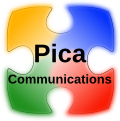
Small Upside, Big Downside
The payoff from gambling on SA may be lower than the payoff for gambling against it
By Paul DeGroot
Principal Consultant
Pica Communications
Let's do some math on SA.
Most SA customers are purchasing it in a three-year volume-licensing agreement.
On a desktop product, customers pay an extra 29% of the current license price per year for SA. Over three years, they pay three times that, or 87% of the license price. That leaves them with a 13% discount.
That's not a huge incentive, and if you compare the upside with the downside, it looks even worse.
- The upside is that you get a 13% discount.
- The downside, which happens if Microsoft doesn't release a product during your term, or if they release a product but you don't use it (Anyone for a nice shot of Vista? Anyone?), is that you lose 87% of the price of the product.
We're not talking about just losing the opportunity for a discount. You actually lose money that you have paid Microsoft, for which you may have received nothing of value by the end of the agreement.
Since most people consider 87 to be bigger than 13, the downside is significantly greater than the upside. Do customers ever lose with these odds? Yes.
If you have an Enterprise Agreement and you're still using Windows XP and Office 2003, a scenario that I run into all the time, you have paid Microsoft in full for two products that you will never install: Windows Vista and Office 2007. That's roughly $700 in software per PC, plus interest, that you have poured down the drain into Microsoft shareholders' pockets.
Think you've smartened up? If you install Windows 7 and Office 2010 today, but you continue to pay SA on them, you're going to repeat that mistake—odds are you'll never install Windows 8 and Office 2013, since most business customers don't upgrade desktop products less than every 5-6 years. That puts your next upgrade at about the time Windows 9 and Office 16 arrive, so you skip the software that you're betting on today and donate another $700 to Microsoft shareholders.
Hey, what's another $700 per PC among friends? At least that's what my friends at Microsoft say.
Don't forget the cost of money. Sure, if you have $40 billion in the bank, like some software companies do, you don't do a lot of borrowing. But the other half of the world doesn't have that advantage. Money costs money. If you're paying 5% interest per year on the money you pay Microsoft for SA, your final discount will be somewhere in the region of 8%.
Playing Customers for Suckers
Finally, there's a weird wild card. Sometimes, if you don't buy SA, Microsoft will give you a bigger discount than if you do buy SA.
No way, you say. Way. For example, shortly after Windows 7 came out, Microsoft offered volume customers a 15% discount on Windows 7 upgrades. No SA was required. So customers won a 13% discount if they bet for SA and they won a 15% discount if they bet against it.
Microsoft is doing this again. Until Jan. 31, you can purchase online a $39.99 upgrade to Windows 8 Pro from Windows XP Pro, Vista Business, or 7 Pro. That's less than many SA customers pay for one year of SA on Windows. In this case, the customer who paid for SA got about a 13% discount and the customer who didn't got about an 80% discount.
